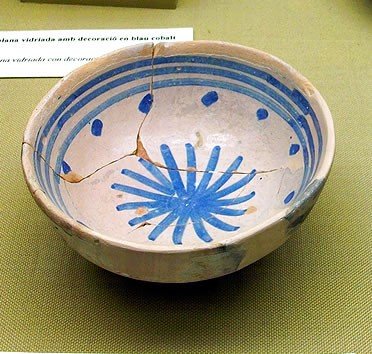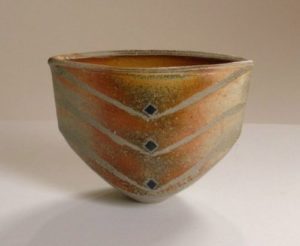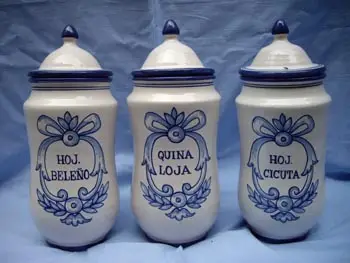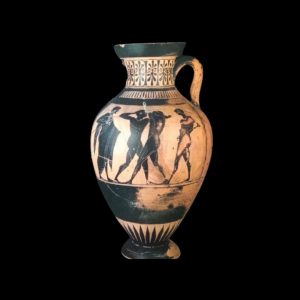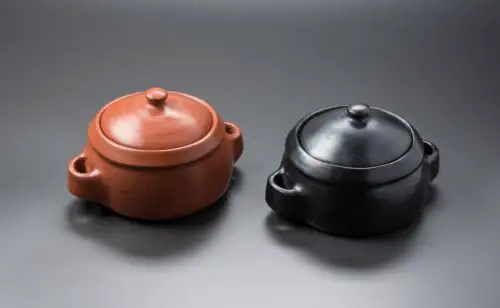Translated by Nick R
It is not surprising that, apart from its gastronomy, landscapes, architecture, and culture, Europe also stands out when it comes to ceramics. In fact, some European countries such as Spain, Italy, Germany, France, and Holland are internationally recognized for their role in the history of artisanal ceramics and their remarkable creations exported all over the world.
Naturally, there must be a story to tell beyond all this success, don’t you think? Well, we know that, just like we do, you are curious to know much more about European ceramics. Let’s look at the history of this practice in the European continent.
Table of Contents
Neolithic Period
Before focusing on each country, you first need to know how this handcraft practice began on the continent. Let’s start!
During the Neolithic period, approximately between 5000 and 2500 B.C., pottery reached the European continent directly from Greece. There, the pre-ceramic Neolithic period developed just when the European ancestors made pieces with vegetables like pumpkins in which they carried liquids. They also used wicker baskets that would be filled with clay on the outside and baked to transport their food. However, as they realized that clay dried faster and was more resistant, they began to make clay pieces.
From that moment on, the manufacture of pottery and porcelain would influence high societies, granting them certain benefits, such as the prestige of producing these pieces.
In the Neolithic period, there were 2 main types of pottery in Europe: The Neolithic cardial pottery and the cardial pottery with handles. We will explain them below so you can better understand what we are talking about.
Neolithic cardial pottery
Neolithic cardial pottery is the oldest type of pottery known in Europe.
It is named after the fact that these pieces were decorated with scratches or dots sequences done with pointed objects and extended around the piece or as the potter wished.
All these decorations were also made with the typical and well-known seashells. To achieve this, they just pressed the edge of the shell against the fresh piece where they wanted.
Neolithic cardial pottery with handles
Neolithic cardial pottery with handles is not very different from the previous one as it is elaborated and decorated following the same procedure as the first.
What differentiates it is that, as its name indicates, the word handle stands precisely for that, handled pieces. But, what are handles? Easy, a handle is a branch from where the ceramic pieces are grasped.
Fun fact: the handles of the Neolithic period were not shaped like ears, but rather, they were small protruding lumps of clay.
To continue, let’s show you how ceramics developed in the countries of Spain, Italy, Germany, France, and Holland. These 5 places are known for their high production and export of ceramics.
Ceramics in Spain
Ceramics in Spain first appeared in 2000 B.C. So why did they originate? Basically, the reasons we have just told you about (need to store food and water) as it happened during the Neolithic period too.
As years went by, different types of ceramic were manufactured in Spain, and we will talk about them here.
Visigothic Ceramics
The Visigothic type of pottery is named after its creators, the Visigoths. And you may be wondering: who the heck are the Visigoths? Well, they were a northern European tribe that came to invade Spain in the 6th century AD.
The Visigoths established their kingdom in Spain until the Muslims invaded the country in 711 AD.
Two types of pottery made by the Visigoths are known. The first type was made with clay and fired at low temperatures; it was decorated with designs printed or modeled by their own hands and, finally, it was not glazed.
The second type was similar to the previous one, only this one was decorated with yellow and green glazes.
Muslim pottery
As we mentioned before, the Muslims invaded Spain in 711 A.D. However it took them several years to take over the country completely, in 756 A.D., the Umayyads arrived, and with them, the Spanish culture changed radically, as well as the creation of ceramics.
Besides this, the Muslims began to export their pottery, which was highly desirable in places like Mesopotamia. Muslims’ pieces were very graceful, luxurious, and expensive, so much so that most of them were destined for the palaces of the time; here is one of them.
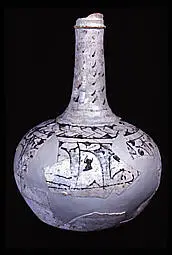
By the 13th century, ceramists in Spain continued to use the Muslim techniques, but in order to add their own style, they began to use the tin glaze.
For glazing, they applied the glaze to the bisque-fired pieces, which are those that had already been fired. Then, they would fire them again, and decorate them with different designs to be fired for the third time.
The colors they used to decorate and glaze their pieces were gold, green, and yellow.
Hispano-Muslim ceramics are divided into 3 groups. The first group was made in regions such as Malaga, Andalusia, and Valencia, and it was very common to see Islamic motifs.
The second one, made in Manises, a suburb of Valencia, was decorated with Muslim and Gothic drawings. It should be noted that this type of pottery was made from the end of the 15th century until 1700 AD.
And finally, the third group was a type of ceramic with French influence, so its decoration was very elegant and detailed. This pottery emerged in the 18th century.
The first ceramic pieces
Among the first pieces of pottery in Spain, we find vessels, bowls, plates, and picheles, also known as jars.
All these objects had blue and white background decorations, and the glaze was green with copper and gold finishes. Also, they featured geometric figures and complex foliage designs.
In Spanish-Muslim ceramics, it is often seen the cuerda seca technique (Spanish for ¨dry cord), in which the glazes of different colors are separated so that they do not mix. Generally, they were separated with black-colored sections that would not damage the style of the piece.
Mudejar style ceramics
Mudejar pottery results from the fusion between the influences of the Catholic Church and the Gothic style.
Remember that the Gothic style includes the use of coats of arms or heraldry, which are always painted in dark colors such as black, blue, and green. These heraldries had drawings of animals like the eagle, the lion, and the dragon. On the other hand, the figures also had drawings of plants and foliage of different colors.
Usually, the Mudejar pieces were decorated in blue and white and glazed in red, yellow, and blue colors.
Eighteenth-century French-style ceramics
This type of pottery gets its name as it was developed in the 18th century, specifically in Álcora, Valencia.
The eighteenth-century style of pottery consisted of taking artists from France to exhibit their pieces with the most outstanding decoration in France. All of them were painted with bright white background, and the decoration was made in blue, yellow, green, and brown.
All its decoration was based on Arab drawings and Rococo floral motifs.
Talavera de la Reina
Talavera de la Reina pottery was made in Central Spain. It had a milky-white glaze as a base and was painted in blue, green, yellow, orange, and purple on top.
Animal drawings such as singing birds, rabbits, deer, and herons were painted as decoration on these pieces, all accompanied by foliages of various sizes. Over time, landscapes, wild beasts, and children playing were added.
Talavera pottery was said to stimulate the appetite since its brilliant purity enhanced the flavor of all foods served on them. Curious! That is why, in the year 1575, this pottery began to have royal patronage and thus was commercialized all over the country.
Ceramics in Italy
Ceramics in Italy emerged between the years 500 and 1000 AD. Most of the advances were in Venice and Ravenna, and one of them led the use of lead glaze.
It is noteworthy to mention that in the 11th and 12th centuries, Italy imported numerous pieces from Muslim countries, which were exclusively designed to decorate churches. Sometime later, these pieces were imitated by several Italian ceramists.
The first ceramic pieces
The first ceramic pieces in Italy included the imitation of the aforementioned vessels and household objects like plates, cups, trays, jugs, bowls, cups, vases, and more.
All of these pieces were decorated with simple geometric or floral designs with foliage.
Pottery in the early period
The use of tin glaze on red vessels was implemented by 1200 AD. After this, the coloring oxides appeared to be painted on the green glaze. The color blue was introduced a little later.
During this period, the decorative drawings that were painted on the pieces consisted of natural forms, with linear motifs, vegetables, fruits, foliage, geometric shapes, birds, or other animals holding armorial shields. Some of these figures were painted in low relief, that is, to make them slightly sunken and give the object a different appearance and texture.
Formal style ceramics
The formal-style pottery differs very little from the early ceramics since the same forms of decoration and objects were maintained, only that they were better elaborated. However, they added primary colors (red, yellow, and blue) and green, purple and brown.
Also, a new form of decoration was introduced, called ” Familia Verde Florentina” (Florentine green family), which consisted of painting peacock feathers on a white background; green and purple colors predominated in this design.
During this age foliar designs, symbols, radiant lights, heraldic emblems, religious figures, animals, and sacred monograms appeared.
Renaissance style pottery
During the Renaissance period, by 1500, the most popular ceramic was the majolica, which we mentioned before. This type of pottery was influenced by the Spanish and Gothic styles, therefore, there was not much difference.
However, one of the most notorious changes was the figures used to decorate all the pieces: whether for decorative or domestic use. These objects had depictions of mythological themes, which included figures of cupids, dolphins, and satyrs: human-bodied figures with horns, pointed ears, a goat’s tail, and two hairy legs.
On the other hand, the luster pottery was also implemented, characterized by gold and ruby luster decorations over a black background. In addition, scales and imitation of precious metals were added to reflect the light.
Baroque style ceramics
The Baroque ceramic style appeared at the beginning of the 17th century. This style of ceramics left aside the typical decorative figures and began to use precious metals to form certain figures.
The objects most commonly manufactured during this period were trays, plates, flasks, candlesticks, wine coolers, busts, pharmacy jars, and others. All of them were decorated with dark and light blue, yellow, and orange colors.
Besides these pieces, other objects were also made, namely monsters, sphinxes, mermaids, and more mythological figures. Each of them was based on gold, silver, copper, and bronze objects, which is why they imitated metal.
Sgraffito lead-glazed pottery
Sgraffito lead-glazed pottery was implemented in Italy around 1300 A.D. It was made by using a white engobe for the background, then scratching the drawing out of the engobe, and finally, adding the lead glaze.
This technique enabled the creation of pieces such as trays to which green and brown colored leaf figures were added. Although, gothic figures were also implemented, which we have already mentioned.
Ceramics in Germany
Pottery appeared in Germany around 400 AD. Most of the pieces that were made were introduced by the Romans, so they continued to make domestic wares.
Early pottery
As mentioned earlier, the early pottery in Germany consisted of rustic pieces suitable for use in household crafts, such as pots, vases, bowls, and more.
By the 9th century, kilns improved, and along with them did the firing temperatures for the pieces, which led to the production of stronger and more resistant objects. Furthermore, the preparation of the clay was also refined, thus allowing for a harder and more vitrified paste, which would eventually be known as earthenware.
In addition to this, in that period, the primitive third fire pottery was created. What differentiated this clay was its grey color, while the other common ones were red.
The gray clay was resistant to the highest temperatures and, after being fired, it kept a steady, dense, and waterproof structure, which made it remain in the market from that moment on. Its similarity to earthware needs to be noticed; however, the difference was that the earthenware is not translucent white, while gray clay is.
Salt glazing technique
The salt glazing technique originated in the late 14th and early 15th centuries.
At that time, in the region of Rhenina, there was a type of clay with high silica levels that was mixed with salt and exposed to high temperatures resulting in a simple natural but resistant glaze. Great!
This glaze resulted in brown and orange colors with textures that varied depending on the amount of clay and salt used.
This type of pottery was quite an innovation and success in Germany due to more than just a good manufacturing technique. The first reason is that during this same period, metallurgical objects were being made, so potters decided to copy some of these techniques, including shapes and designs to add them to their pieces.
And the second was the increase in beer and wine distribution on the continent. Salt-glazed ceramic counters, glasses, and vessels began to be made for the consumption of these beverages.
Salt glazing was so successful in Germany that there were 2 types of glaze which differed mainly by their brown and white color. So you can learn more about these ceramics, now we will tell you a little about them.
Brown salt-glazed pottery
The objects that were made using this technique were all kinds of pieces for domestic use, within which pots and vases stood out.
These vases stood out for their wide shape and their long, narrow neck. All the pieces were usually decorated with drawings of nude figures of gods of the time, religious scenes, and social scenes such as banquets and feasts.
Besides, these items were decorated through iron baths to change their tone and precious stones incrustations.
White salt-glazed pottery
The first ceramics made were brown or gray; however, around the 16th century, the clay preparation began to be more elaborated, so much so that they could make a much thinner white ceramic than the others.
However, using this type of clay, vessels and jugs began to be made. The salt glazing technique was applied to these pieces; however, the results were not as expected because the glaze produced was thinner and not as shiny as with the brown clay.
Because of that, some pieces were produced in this way and decorated with mythological, anti-Catholic, and wild licentious scenes. They also left traces of the lathing.
Colored ceramics
By the early 17th century, the new potters incorporated the use of blue and purple colors to produce colored salt-glazed ceramics. These tones were rather light when compared to the brown and white shades typical of this type of pottery.
They discovered, after several attempts, that salt glazing didn’t work well with the colors they just had added, and thus they began to mix blue and purple tones with the grey ceramic we told you about. By combining them, they noticed a magnificent outcome; a somber but eye-catching effect.
This technique was a great success in the country, so they began to manufacture plates, trays, dishes, figurines, and more objects that could be quickly and easily marketed.
Tin-glazed pottery
This type of pottery first appeared in Germany in the 16th century. At this time, dishes and pharmacy jars were made. The designs painted as decoration had a strong Italian influence.
Thanks to the success of this pottery, two factories, also known as German factories, began to produce tin-glazed pottery during the mid-17th century. The first factory was made up of Dutch religious refugees, who decorated their pieces with drawings of flowers accompanied by different species of birds.
The second factory was made by a French ceramist in the German city of Frankfurt am Main. He would decorate his ceramic ware with blue and draw things like rocks, bushes, birds, butterflies, and different kinds of insects. The latter factory manufactured more items than the former, including cups, trays, plates, vases, jugs, and basins, which are long jugs with a curved mouth at the bottom and stretched upwards.
Ceramics decorated with enamel
By the early 16th century, brown, gray, and white salt-glazed ceramics were already being produced, but the Germans continued to look for ways to include more color so as to make their ceramics more attractive and unique.
It was then that brightly colored opaque glazes began to be used, which were applied over a plain background. At the same time, a dark glaze was used to contrast and play with the previous colors.
Their decoration was done with great precision and delicacy. These geometric drawings or patterns were sketched with colors previously used or colors that could combine with them. Usually, pictures of mythological or religious gods were painted.
Ceramics in France
Pottery in France started in the 14th century. By that time, all kinds of utensils for domestic use were made, such as plates, jugs, trays, bowls, etc.
Later, further advances were made regarding the production of ceramics and their decoration. Now, we will share with you one of the most important ones.
Tin-glazed pottery
Tin-glazed pottery was one of the most relevant advances in French ceramics. We began by telling you that it originated in 1332; however, not much is known about who created it, as it is rumored that it was created by the French or Muslims who had fled from Spain.
We do know that the first pieces of this type were decorated with green and purple geometric designs and that they had a strong Italian influence. Such objects were produced in the 16th century.
The decoration of this pottery consisted of bird and flower motifs on a white or pale yellow background.
In the middle of the 18th century, the production and commercialization of this type of pottery increased, and thus, more objects such as table accessories, diamond boxes, salt shakers, pitchers of all sizes, and vegetable or animal-shaped soup plates began to be produced. Incredible!
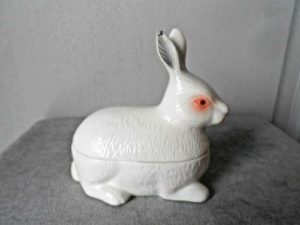
Pottery in Holland
There is no official record of the exact date and place where pottery originated in Holland. However, we will talk about Deltf pottery, which is typical Dutch pottery.
Tin-glazed pottery
Tin-glazed pottery first appeared in Holland at the beginning of the 16th century. It was inspired by Italian pottery, so its decoration and shape were very alike.
Delft pottery appeared in the 17th century. It is characterized by its white and blue colors, inspired by Chinese pottery. With the fall of the Ming dynasty in China, the Dutch saw their golden opportunity, and it was here that the commercialization of Delft pottery expanded considerably throughout Europe and other parts of the world.
Sometime later, Dutch potters worked hand in hand with painters and, as a result, they managed to add more colors such as green, red and yellow, mixing them in decoration with the blue and purple they were already using.
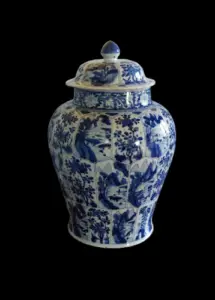
European ceramics today
Currently, the European continent is characterized by not only its long history in the manufacture of handmade ceramics but also as one of the continents with top-ranking countries in ceramics production.
Within this list, the country that stands out the most is Spain because as you can realize, this country has always been renowned for this wonderful work.
These pieces go from household objects to decorative and contemporary ceramics, each one of them with a predominance of colors; white as the base and blue, green, yellow, red, purple, orange, gold, silver, and all the colors you can imagine to decorate the pieces.
And the best thing about this antique pottery is that you can find and appreciate it in the best ceramic museums.
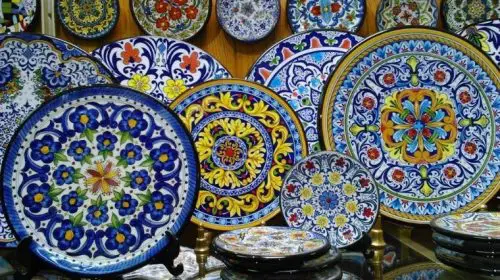
So far, this is the end of today’s blog. We are sure you learned a lot about the fascinating history of ceramics in Europe. We hope you liked the article and learned about the origins of this ancient practice. If you want to know about the whole history of the wonderful world of ceramics, below, we allow you a list of blogs about the history of this art in different parts of the world.
- History of pottery in Greece
- Learn about the history and 12 types of ceramics in China.
- The history of Japanese ceramics and porcelain
- Learn about Quimbaya pottery and its history
- Chamba pottery and its history
- Ceramics in Colombia and its history
Don’t forget to keep reading our blog. See you in the next post.



